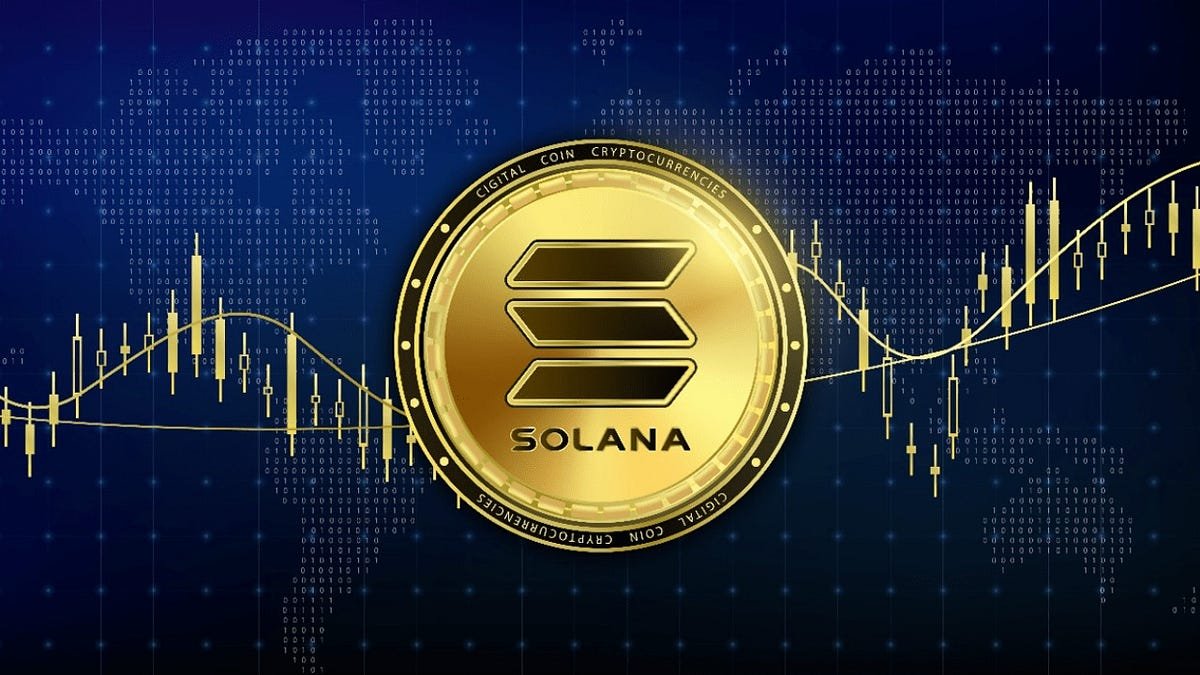
Solana exchange-traded funds. As digital assets mature from speculative ventures into legitimate investment vehicles, Solana has positioned itself as a formidable player in the blockchain ecosystem. The introduction of ETFs tracking this high-performance network represents more than just another financial product—it signals a fundamental transformation in how institutions approach cryptocurrency investments and portfolio diversification strategies.
For years, institutional investors maintained a cautious stance toward digital currencies, citing concerns about volatility, regulatory uncertainty, and the technical complexities of direct cryptocurrency ownership. However, the tide has shifted dramatically. With Bitcoin and Ethereum ETFs paving the way and demonstrating substantial demand, the financial industry now sets its sights on alternative blockchain platforms. Solana’s rapid transaction speeds, low fees, and growing ecosystem make it an attractive candidate for the next wave of crypto-focused investment products. This article explores how Solana ETFs are reshaping institutional investment strategies, the regulatory landscape surrounding these products, and what this means for the broader cryptocurrency market.
Solana’s Position in the Cryptocurrency Market
Before examining the implications of Solana ETFs, it’s essential to understand what distinguishes this blockchain from its competitors. Launched in 2020, Solana quickly gained recognition as a high-performance blockchain capable of processing thousands of transactions per second while maintaining minimal costs. Unlike Ethereum, which has faced persistent scalability challenges, Solana’s architecture was designed from the ground up to prioritize speed and efficiency through its innovative proof-of-history consensus mechanism.
The Solana network has cultivated a vibrant ecosystem encompassing decentralized finance applications, non-fungible token marketplaces, gaming platforms, and enterprise solutions. Major corporations and developers have migrated to Solana precisely because of its technical advantages and cost-effectiveness. This organic growth has translated into substantial market capitalization, positioning SOL among the top cryptocurrencies by value. The network’s resilience despite occasional technical setbacks demonstrates the community’s commitment and the platform’s fundamental value proposition.
From an institutional perspective, Solana represents something different from Bitcoin’s store-of-value narrative or Ethereum’s smart contract dominance. It offers exposure to a blockchain infrastructure that prioritizes real-world utility and scalability. As decentralized applications continue proliferating and Web3 adoption accelerates, Solana’s performance characteristics become increasingly valuable. This context explains why institutional investors view Solana not merely as a speculative asset but as strategic exposure to next-generation blockchain technology.
The Evolution of Cryptocurrency ETFs
The journey toward Solana exchange-traded funds didn’t begin in isolation but rather represents the culmination of years of regulatory battles and market development. Bitcoin ETF applications faced rejection after rejection from the Securities and Exchange Commission, with regulators citing concerns about market manipulation, custody solutions, and investor protection. The breakthrough finally came when spot Bitcoin ETFs received approval, unleashing billions of dollars in institutional capital and validating the ETF structure for cryptocurrency exposure.
Ethereum ETFs followed shortly after, demonstrating that regulators were willing to extend this investment vehicle beyond Bitcoin to other established digital assets. These approvals established crucial precedents regarding custody arrangements, market surveillance mechanisms, and disclosure requirements. Each successive approval streamlined the pathway for additional cryptocurrency ETFs, gradually normalizing the concept of exchange-traded crypto products in traditional financial markets.
Now, asset management firms turn their attention to alternative cryptocurrencies with strong fundamentals and institutional appeal. Solana naturally emerges as a leading candidate given its market position, technological capabilities, and growing adoption. Multiple financial institutions have filed preliminary applications for Solana-based investment products, signaling strong industry confidence in both the asset and the regulatory trajectory. This progression reflects the maturation of cryptocurrency markets and the financial industry’s recognition that blockchain technology extends far beyond Bitcoin.
Why Institutional Investors Are Embracing Solana ETFs
Institutional investors operate under constraints that retail participants rarely consider. Compliance requirements, fiduciary responsibilities, operational limitations, and risk management protocols all influence investment decisions. Direct cryptocurrency ownership presents numerous challenges for institutions, including secure custody solutions, accounting complexities, regulatory compliance burdens, and operational infrastructure requirements. These obstacles historically deterred many institutional players from gaining cryptocurrency exposure despite recognizing its potential.
ETF structures elegantly address many of these concerns by wrapping cryptocurrency exposure in a familiar, regulated investment vehicle. Institutions can purchase Solana ETF shares through traditional brokerage accounts without establishing cryptocurrency wallets, managing private keys, or navigating digital asset exchanges. The ETF sponsor handles custody, security, and operational complexities while providing transparent pricing, regulatory oversight, and standardized reporting. This accessibility dramatically lowers barriers to entry for pension funds, endowments, family offices, and traditional asset managers.
Beyond operational convenience, Solana ETFs offer strategic portfolio benefits. Institutional investors increasingly recognize cryptocurrency’s role in diversification strategies, particularly during periods of monetary uncertainty and inflation concerns. Solana specifically provides exposure to blockchain innovation and decentralized application growth without the same degree of correlation to traditional risk assets. As institutions construct modern portfolios designed to navigate technological disruption and digital transformation, Solana represents targeted exposure to these secular trends through a regulated, accessible investment vehicle.
Regulatory Landscape and Approval Processes
The regulatory environment surrounding cryptocurrency ETFs remains complex and constantly evolving. The Securities and Exchange Commission maintains rigorous standards for any investment product offered to public investors, and cryptocurrency ETFs face additional scrutiny given the digital asset market’s relative immaturity. Key regulatory considerations include market surveillance capabilities to detect manipulation, robust custody solutions protecting investor assets, transparent pricing mechanisms ensuring fair valuations, and comprehensive disclosure providing investors with material information.
For Solana ETF applications, sponsors must demonstrate that adequate surveillance-sharing agreements exist with significant markets where SOL trades. This ensures regulators can monitor for fraudulent or manipulative trading activities. The approval process also requires detailed explanations of how the fund will custody assets securely, what counterparty risks exist, and how the fund’s net asset value will be calculated accurately. These requirements protect investors while ensuring the ETF operates with appropriate safeguards.
Recent regulatory developments suggest growing openness toward alternative cryptocurrency ETFs. As Bitcoin and Ethereum products demonstrate successful launches without significant market disruptions or investor harm, regulators gain confidence and extend approvals to additional digital assets. However, each application still undergoesa thorough review, and approval timelines remain uncertain. The regulatory pathway for Solana ETFs likely benefits from precedents established by earlier cryptocurrency ETF approvals, potentially expediting the process compared to pioneering Bitcoin applications that faced years of rejections.
Market Impact and Investment Implications
The launch of Solana ETFs would fundamentally alter market dynamics for the cryptocurrency. Historical precedent from Bitcoin and Ethereum ETF launches demonstrates substantial inflows following approval, as institutional capital that remained sidelined finally gains accessible entry points. These inflows create sustained buying pressure that can materially impact prices while simultaneously reducing volatility as long-term institutional holders provide market stability.
Beyond price implications, ETF availability enhances market liquidity and infrastructure. Authorized participants creating and redeeming ETF shares engage in arbitrage activities that improve price efficiency across cryptocurrency exchanges. The increased institutional participation attracts additional market makers and liquidity providers, further deepening markets. This virtuous cycle benefits all market participants by reducing trading costs, minimizing slippage, and creating more robust price discovery mechanisms.
For the broader Solana ecosystem, ETF approval represents validation and legitimacy that extends beyond financial markets. Developers building on Solana gain confidence from institutional endorsement of the platform’s long-term viability. Enterprise adoption accelerates as corporations recognize Solana’s acceptance by regulated financial institutions. The network effects compound as increased attention, capital, and development activity reinforce Solana’s position as a leading blockchain platform. These ecosystem benefits potentially exceed the direct market impact of ETF-driven capital inflows.
Comparing Solana ETFs to Other Crypto Investment Vehicles
Investors evaluating Solana exposure face multiple options, each with distinct advantages and limitations. Direct SOL ownership provides maximum flexibility and control, allowing participation in network staking, governance, and decentralized applications. However, this approach requires technical competence, security consciousness, and a willingness to navigate cryptocurrency exchanges. Many institutional investors find these requirements prohibitive despite the benefits of direct ownership.
Cryptocurrency trusts and closed-end funds offer alternatives that existed before ETF approvals. These vehicles provide indirect exposure but often trade at significant premiums or discounts to net asset value, creating inefficiencies that disadvantage investors. Additionally, their closed-end structures limit liquidity and redemption options. Futures-based cryptocurrency funds present another option, though these introduce basis risk, rollover costs, and tracking errors that diminish returns over time.
Solana ETFs combine the accessibility and regulatory comfort of traditional investment vehicles with the efficiency and transparency lacking in earlier cryptocurrency fund structures. The ETF’s open-ended structure allows continuous creation and redemption, minimizing premiums and discounts while providing liquidity. Investors benefit from transparent daily pricing, regulated custody arrangements, and familiar tax treatment. For institutions prioritizing operational simplicity and regulatory compliance, Solana ETFs represent the optimal balance between cryptocurrency exposure and traditional investment frameworks.
Future Outlook for Institutional Crypto Adoption
The trajectory toward mainstream institutional cryptocurrency adoption appears irreversible, with Solana ETFs representing another milestone in this journey. As regulatory frameworks mature and investment products proliferate, the distinction between traditional and digital assets continues to blur. Forward-thinking institutions recognize that blockchain technology and decentralized networks will fundamentally reshape multiple industries, making strategic exposure essential for long-term portfolio positioning.
Looking ahead, we can anticipate additional cryptocurrency ETFs covering diverse blockchain platforms and investment strategies. Thematic ETFs focusing on decentralized finance infrastructure, metaverse platforms, or blockchain gaming may emerge as these sectors mature. Multi-asset cryptocurrency index ETFs could provide diversified exposure across multiple networks, appealing to investors seeking broad blockchain exposure without concentration risk in individual protocols.
The success of Solana ETFs and similar products will likely encourage even broader institutional engagement with cryptocurrency markets. As comfort levels increase and operational frameworks solidify, institutions may explore more sophisticated strategies including staking participation, liquidity provision, and venture investments in blockchain companies. This progressive engagement model—beginning with simple ETF exposure and advancing toward more active participation—will define the next decade of institutional cryptocurrency adoption.
Conclusion
The emergence of Solana ETFs represents far more than another financial product launch—it signals a fundamental shift in how institutional investors approach cryptocurrency markets and blockchain technology. By providing regulated, accessible exposure to one of the fastest-growing blockchain networks, these investment vehicles lower barriers that previously deterred traditional finance from meaningful cryptocurrency participation. The implications extend throughout financial markets, influencing everything from portfolio construction strategies to regulatory frameworks and blockchain ecosystem development.
As institutional capital flows into Solana through ETF structures, the cryptocurrency market matures further toward legitimacy and integration with traditional finance. This evolution benefits all market participants by improving liquidity, reducing volatility, and attracting additional innovation and development. While challenges remain regarding regulation, market infrastructure, and technological risks, the trajectory clearly points toward continued institutional adoption and acceptance of cryptocurrency as a permanent asset class.
For investors, financial advisors, and industry observers, Solana ETFs provide a valuable case study in cryptocurrency’s ongoing transformation from speculative trading vehicle to strategic investment opportunity. Understanding these developments and their implications positions stakeholders to navigate the evolving digital asset landscape effectively, whether participating directly or simply monitoring this historic shift in global financial markets.
FAQs
Q1: What makes Solana different from other cryptocurrencies that might get ETF approval?
Solana distinguishes itself through exceptional transaction processing speeds, minimal fees, and a robust ecosystem of decentralized applications. Unlike many blockchain platforms that struggle with scalability, Solana’s architecture enables thousands of transactions per second, making it ideal for real-world applications.
Q2: How would a Solana ETF benefit retail investors compared to buying SOL directly?
A Solana ETF offers retail investors simplified access without requiring cryptocurrency wallets, private key management, or exchange accounts. It provides regulatory protections, familiar brokerage account integration, and straightforward tax reporting through standard 1099 forms. While direct ownership offers additional benefits like staking participation.
Q3: What are the potential risks associated with investing in Solana ETFs?
Investors should recognize that Solana ETFs carry inherent cryptocurrency volatility, regulatory uncertainty, and technological risks specific to the Solana network. The blockchain has experienced occasional outages that, while temporary, raise reliability questions. Additionally, competitive pressures from other blockchain platforms, regulatory changes affecting cryptocurrency markets.
Q4: When might Solana ETFs become available to investors?
The timeline for Solana ETF approval remains uncertain and depends on regulatory review processes at the Securities and Exchange Commission. While multiple asset managers have expressed interest and filed preliminary applications, approval could take months or potentially longer. The regulatory pathway benefits from precedents established by Bitcoin and Ethereum ETF approvals.
Q5: Can institutions stake SOL within an ETF structure to generate additional returns?
Some proposed Solana ETF structures incorporate staking mechanisms that would allow the fund to earn staking rewards, potentially enhancing returns beyond simple price appreciation. However, staking introduces additional operational complexities, regulatory considerations, and potential tax implications that sponsors must address.









